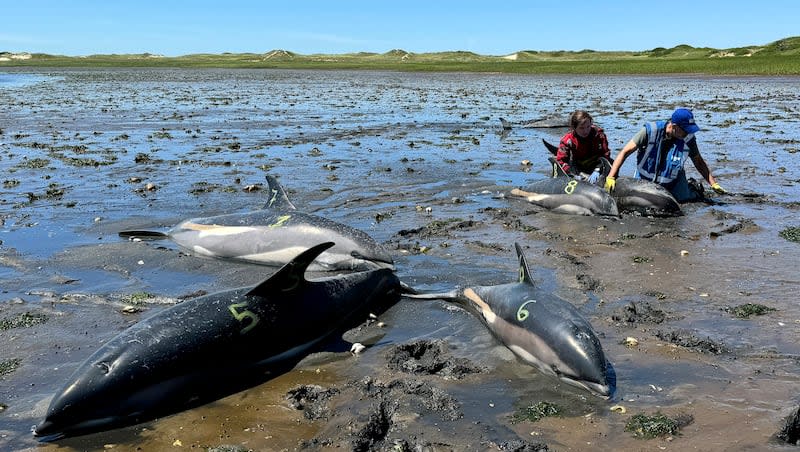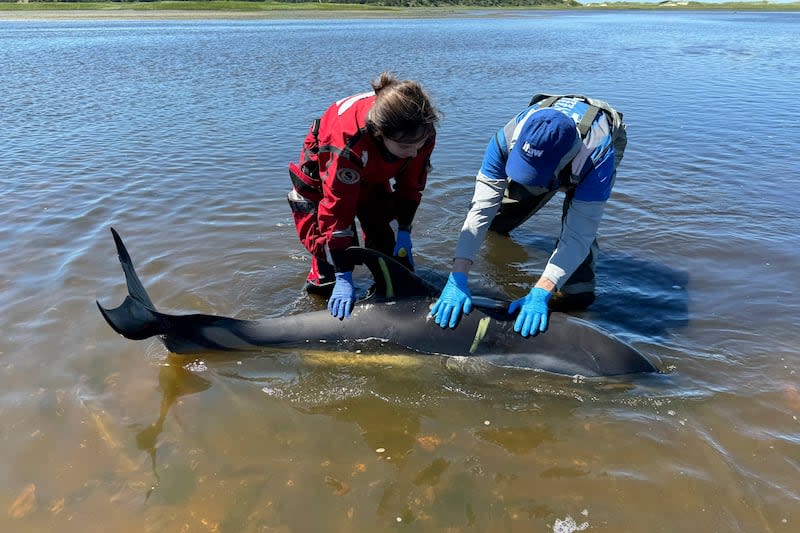Video: Over 100 dolphins saved after mass stranding event

Over 100 dolphins were stranded at Cape Cod on June 28, becoming part of the largest officially declared mass dolphin stranding in U.S. history, according to the International Fund for Animal Welfare, or IFAW.
The dolphins were found in the Herring River “Gut,” an area prone to mass strandings because of its shape and extreme tidal fluctuations, per the IFAW’s press release. IFAW typically responds to about 315 cases in Cape Cod annually.
Initially, 10 Atlantic white-sided dolphins were reported swimming near the shore of Wellfleet, Massachusetts. When IFAW’s marine mammal rescue team arrived, they discovered between 80 and 100 stranded dolphins. The final count showed that 146 dolphins were stranded.
A large rescue operation spanning several days was launched, involving 25 IFAW staff members, 70 trained volunteers and assistance from various partner agencies.
“It was a 12-hour, exhausting response in the unrelenting sun,” Misty Niemeyer, stranding coordinator for IFAW said on the agency’s website, “but the team was able to overcome the various challenges and give the dolphins their best chance at survival.”
Per IFAW, the operation was successful, with 102 dolphins being returned to deeper waters, a 70% survival rate.
Ten dolphins had already died before the rescue team arrived, 27 died from natural causes during the operation, and seven were humanely euthanized.
Even after dolphins are released back into the water, they are at risk of becoming restranded and getting caught in recurring tidal shifts, which is stressful and can lead to a “grave prognosis,” according to IFAW, making it necessary to euthanize them.
“The prognosis for each animal declines as time passes if they continue to re-strand,” Niemeyer said. “The animals are likely showing signs of the cumulative stresses and trauma associated with repeat strandings and effects of tidal fluctuations, even if they have not re-stranded.”
IFAW tracked the released dolphins with satellite tags to monitor their status and responded to additional strandings.
“While we are confident that the majority of the (approximately) 114 animals that were refloated on Friday have made it to deeper water, we have had reports of smaller groups close to shore each day,” Niemeyer said. “So, the team continues to manage each report as it is received.”


